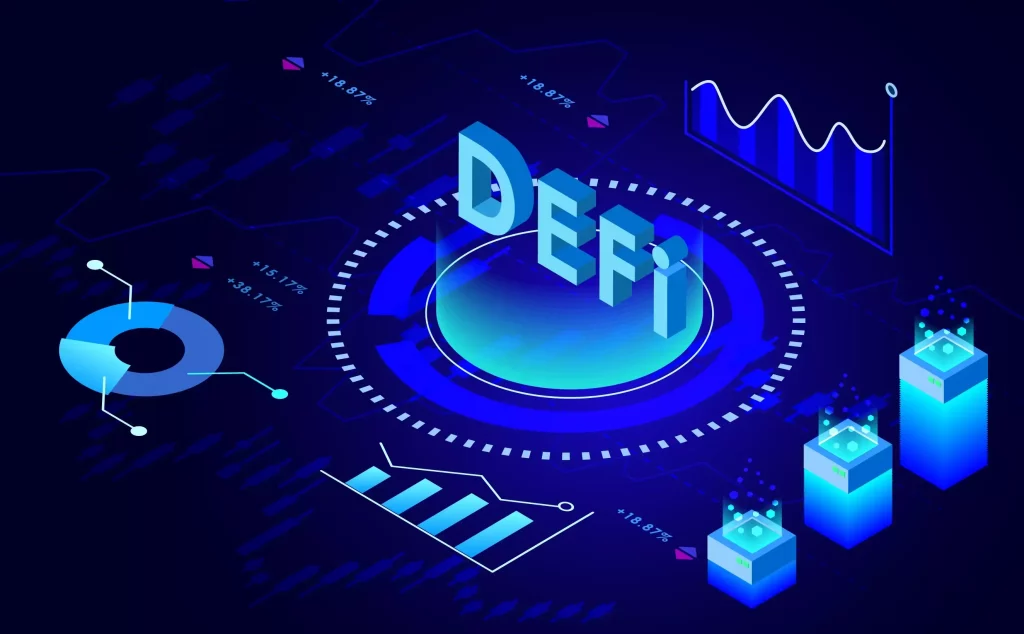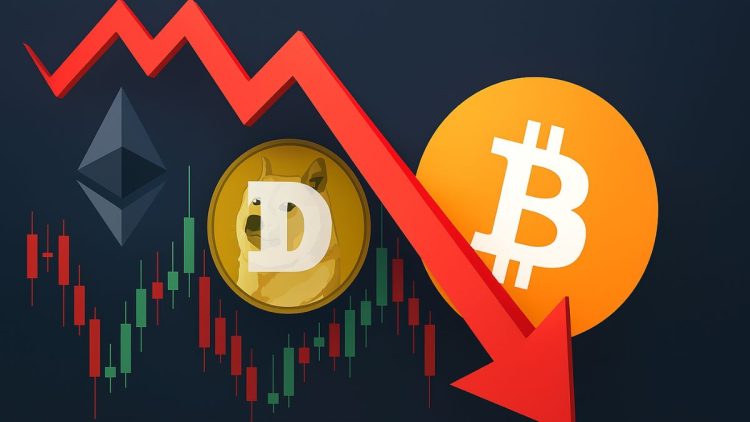The world of finance is undergoing a profound transformation, driven largely by innovations in blockchain technology and the rise of cryptocurrencies. At the heart of this transformation lies Decentralized Finance (DeFi), a revolutionary movement that is reshaping traditional financial services. Unlike traditional finance, where centralized entities like banks and financial institutions act as intermediaries, DeFi platforms are designed to operate in a decentralized, permissionless, and transparent manner, leveraging blockchain technology and smart contracts to provide financial services directly between users.
Among the key players in the DeFi space are Decentralized Exchanges (DEX), Lending Platforms, and Stablecoins—each of which has grown rapidly over the past few years, making DeFi one of the most exciting and disruptive sectors in the crypto market. This article explores the growth of DEXs, DeFi lending platforms, and stablecoins, examining their role in the broader DeFi ecosystem and how they are helping to revolutionize finance.
1. Introduction to Decentralized Finance (DeFi)
DeFi represents a movement within the cryptocurrency space that seeks to recreate and improve upon traditional financial systems, such as lending, borrowing, trading, and insurance, but in a decentralized manner. Built on open-source blockchain platforms, most commonly Ethereum, DeFi applications (or DApps) allow users to directly engage in financial transactions without the need for banks, brokers, or other intermediaries.
What sets DeFi apart is its focus on accessibility, transparency, and decentralization. Unlike traditional financial systems, which are often controlled by central authorities, DeFi operates in a way that removes intermediaries, offering users more control over their assets. Smart contracts—automated, self-executing agreements embedded in blockchain technology—serve as the backbone of DeFi, enabling transactions to take place securely and autonomously.
In recent years, the growth of DeFi has been staggering, with a total value locked (TVL) in DeFi protocols surging into the hundreds of billions of dollars. As of 2023, DeFi Pulse reports that the TVL in DeFi reached well over $100 billion, illustrating the rapid adoption and increasing importance of decentralized financial applications.
Central to this revolution are Decentralized Exchanges (DEX), lending platforms, and stablecoins, all of which contribute significantly to the expansion of DeFi.
2. Decentralized Exchanges (DEX): Redefining Crypto Trading
One of the most significant innovations in the DeFi ecosystem is the rise of Decentralized Exchanges (DEX). These platforms allow users to trade cryptocurrencies directly from their wallets, without the need for a centralized intermediary. By using smart contracts, DEXs enable peer-to-peer trading in a trustless and secure environment.
How DEXs Work
Unlike traditional exchanges such as Binance or Coinbase, where users deposit their funds into a centralized exchange wallet, DEXs allow users to retain control of their private keys and assets at all times. This ensures that traders are not exposed to the risks associated with centralized exchanges, such as hacks, fraud, or insolvency.
Some well-known DEXs include Uniswap, Sushiswap, PancakeSwap, and 1inch. These platforms rely on liquidity pools instead of traditional order books. Users can add liquidity to these pools in exchange for a share of the transaction fees. The assets in these pools are used to facilitate trades, and prices are determined by the ratio of assets in the pool.
Key Features of DEXs
- Non-Custodial: Users retain control over their assets and private keys at all times.
- Liquidity Pools: Instead of matching buy and sell orders, DEXs use liquidity pools to facilitate trades.
- Decentralization: DEXs are typically community-run and not controlled by any central authority.
- Global Accessibility: DEXs are open to anyone with an internet connection and a compatible wallet.
Advantages of DEXs
- No Middlemen: DEXs remove intermediaries, reducing transaction fees and delays.
- Increased Privacy: Users are not required to submit personal information, preserving their privacy.
- Security and Control: Since users hold their private keys, they are less exposed to hacks and security breaches.
Challenges of DEXs
- Liquidity: Liquidity on DEXs can sometimes be lower than that of centralized exchanges, leading to potential slippage during trades.
- User Experience: The interface of many DEXs can be complex for new users, which can be a barrier to adoption.
- Transaction Fees: While DEXs are generally cheaper than centralized exchanges, gas fees on networks like Ethereum can still be prohibitively high during periods of congestion.
Despite these challenges, the growth of DEXs has been rapid. As more traders seek decentralized alternatives to centralized exchanges, DEXs are becoming a cornerstone of the DeFi ecosystem.

3. DeFi Lending Platforms: Democratizing Borrowing and Lending
Another crucial element of the DeFi ecosystem is the emergence of DeFi lending platforms. These platforms allow users to borrow and lend cryptocurrencies without the need for traditional financial intermediaries. Lending platforms are a core part of DeFi, providing individuals with access to loans and the ability to earn interest on their holdings.
How DeFi Lending Platforms Work
DeFi lending platforms typically operate using overcollateralized loans, meaning that borrowers must lock up more collateral than they are borrowing. For instance, to borrow $1,000 worth of cryptocurrency, a borrower may need to provide $1,500 worth of collateral. If the value of the collateral drops below a certain threshold, the borrower’s position may be liquidated.
The lending process is facilitated by smart contracts, which automatically execute the terms of the loan. These platforms also use algorithms to determine the interest rates based on supply and demand. Some of the most popular DeFi lending platforms include Aave, MakerDAO, Compound, and Yearn Finance.
Key Features of DeFi Lending Platforms
- Overcollateralized Loans: To ensure the safety of lenders, most DeFi platforms require borrowers to provide collateral exceeding the value of the loan.
- Automated Lending and Borrowing: Lending and borrowing is facilitated by smart contracts, ensuring efficiency and transparency.
- Competitive Interest Rates: Interest rates are determined algorithmically and can fluctuate based on market conditions.
Advantages of DeFi Lending
- No Credit Checks: DeFi lending does not rely on credit scores or traditional background checks, making it accessible to anyone with a crypto wallet.
- Higher Yields for Lenders: Lenders can earn significantly higher interest rates compared to traditional banks, thanks to the efficiency and low overhead costs of DeFi platforms.
- Global Access: DeFi lending platforms are open to users worldwide, enabling anyone with internet access to borrow or lend cryptocurrency.
Challenges of DeFi Lending
- Smart Contract Risk: The decentralized nature of DeFi means that the platforms are exposed to smart contract vulnerabilities, which could be exploited by malicious actors.
- Volatility Risk: The highly volatile nature of cryptocurrencies poses a risk to both borrowers and lenders. If the value of collateral decreases significantly, positions may be liquidated.
Despite these risks, DeFi lending platforms continue to grow, offering greater inclusivity and higher returns for users than traditional financial institutions.
4. Stablecoins: Ensuring Stability in an Unstable Market
Stablecoins are digital assets designed to maintain a stable value, typically by being pegged to a fiat currency such as the US Dollar. Stablecoins have become a critical component of the DeFi ecosystem, as they provide a way for users to store value in a less volatile form than traditional cryptocurrencies like Bitcoin or Ethereum.
How Stablecoins Work
Stablecoins can be classified into three main categories:
- Fiat-Collateralized Stablecoins: These stablecoins are backed by reserves of fiat currency. For example, Tether (USDT) and USD Coin (USDC) are backed by US dollars held in a reserve account.
- Crypto-Collateralized Stablecoins: These stablecoins are backed by other cryptocurrencies, often in an overcollateralized manner. A notable example is Dai, which is collateralized by Ether (ETH) and other assets.
- Algorithmic Stablecoins: These stablecoins are not backed by collateral, but instead rely on algorithms to control their supply and demand. TerraUSD (UST) was a popular example, though it collapsed in 2022, highlighting the risks of this model.
Key Features of Stablecoins
- Price Stability: Stablecoins are pegged to a fiat currency or basket of assets, ensuring their value remains relatively stable compared to other cryptocurrencies.
- Use in DeFi Applications: Stablecoins are widely used in DeFi applications as a store of value, collateral for loans, and a medium of exchange.
Advantages of Stablecoins
- Reduced Volatility: Stablecoins provide a safe haven from the price fluctuations that often plague cryptocurrencies like Bitcoin and Ethereum.
- Efficiency in Transactions: Stablecoins offer fast, low-cost transactions, making them ideal for cross-border payments and remittances.
- DeFi Collateral: Stablecoins are often used as collateral in DeFi lending platforms, enabling users to borrow or
lend without worrying about price swings.
Challenges of Stablecoins
- Centralization: Many fiat-collateralized stablecoins are centralized and require trust in the issuing entity to hold the necessary reserves. This undermines the decentralization ethos of DeFi.
- Regulatory Concerns: As stablecoins become more widely used, they are attracting increased regulatory scrutiny, especially around their reserves and the potential for market manipulation.
Despite these challenges, stablecoins remain a crucial element in the DeFi ecosystem and are likely to continue growing in popularity due to their ability to provide price stability in the volatile world of cryptocurrencies.
5. Conclusion: The Future of DeFi
The rise of Decentralized Exchanges (DEX), lending platforms, and stablecoins has propelled DeFi into the spotlight, offering innovative financial services that bypass traditional banks and intermediaries. While DeFi still faces challenges such as smart contract risks, regulatory scrutiny, and scalability, its potential to democratize finance and offer greater transparency, security, and inclusivity is undeniable.
Looking ahead, DeFi is likely to continue its rapid expansion, with more sophisticated applications, greater interoperability between blockchain networks, and broader adoption of decentralized financial products. As the industry matures, we can expect to see increased regulatory clarity, more secure platforms, and improved user experiences.
Ultimately, DeFi has the potential to reshape the entire financial ecosystem, providing new opportunities for individuals around the world, particularly those who have been historically excluded from traditional banking systems. As DEXs, lending platforms, and stablecoins continue to thrive, DeFi will likely become an integral part of the global financial landscape, ushering in a new era of decentralized finance.

















































